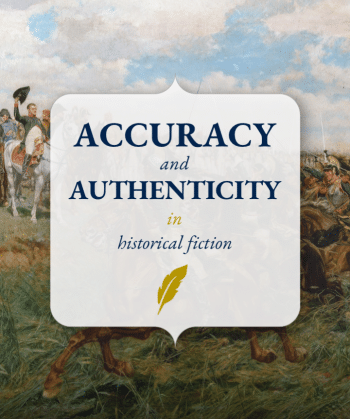It is a universal truth of historical fiction that sooner or later, there is going to be a sword fight. Don’t try to deny it. If your book is set any time before the Victorian era, someone is bound to have a swordfight sooner rather than later.
Physical violence is one of the most straightforward and exciting types of conflict. You owe it to you readers to do this properly. Nothing will banish the tension and drama your prose has built more than a jarring anachronism or lazy Hollywood trope.
I won’t pretend to be a wizened old Master of Arms, but I have been a reenactor for longer than I care to remember. And I have a real soft spot for some of best cringers in the historical fiction genre.
1) No-one spars with real swords.
Without naming and shaming, this is a massive issue, even with published “proper” authors. No, you are not going to use your incredibly expensive and dangerous weapon to practise with your friends. Use a stick.
Apart from the risk of damaging your sword, you also run the risk of damaging your friend. If you’re sparring, you’re practising fighting. And you can’t do that with a real sword without horribly maiming your sparring buddy. When practising, wooden swords or sticks were used. Or possibly a federschwert – a special blunt training sword used in the 15th century.
And no, wrapping it in a padded sheath won’t work either.
2) It’s a sword, not a sparkler.
Please, please don’t have sparks flying dramatically from blades. This isn’t Highlander. To get a spark flying from a sword, two burrs on the blade need to hit at a precise angle. A spark is a tiny piece of metal flaking away, so it is also not doing the sword any good.
3) Congratulations! You now have a mouthful of blood.
Holding a knife or a sword (!) in your teeth sounds really cool, until you actually try to do it.
Do not try to do this!
Instead, try to hold a metal ruler or similar in your mouth. Is it comfortable? Absolutely not. Leave that stuff to Hollywood. It just wouldn’t happen in real life.
Do you write historical fiction?
Join our email list for regular writing tips, resources, and promotions.
4) Why do they have swords?
It can be really tempting when you’re exploring a period of history with swords to have everyone carrying. But please, do your research. Is it appropriate to have someone carrying a sword in front of the king? What were the laws of the time? Can your protagonist afford one? Swords were far more expensive in the early middle ages than in the 15th century, for example. Again, research is your buddy.
Also, think about what type of sword your characters are carrying. No-one is going to take a six-foot zweihander with them down the pub.
5) Binding swords together is silly.
YouTuber Lindybeige has a superb video explaining this. Basically, the hero and the villain lock swords, pressing against each other. It’s a great chance to have a baddie monologue in the middle of a fight. It is also very silly. When swords lock together, the first thing you’d do is bring it back for another strike. Or step into a grapple and wrestle. Hans Talhoffer had dozens of illustrations in his Fight Manual about what to do when this happened, and none of them involved standing there and sneering until the hero does something clever.
6) Don’t chop down trees with a sword. Please.
Why do I even have to say this! I mean, really! This is why axes were invented. Swords are for cutting down people, axes are for cutting down trees. Hacking away at a lump of wood is a great way to blunt and ruin your sword. Don’t do it!
7) Swords don’t break if you step on them.
I mean, stepping on a sword isn’t going to help it, but it is not going to dramatically shatter into pieces ala Isildur VS Sauron. Swords are flexible. They need to be to parry blows and to bend with the impact. Watch a swordfight in slow motion on YouTube and see how the blades vibrate.
8) Throwing your sword means… you don’t have a sword.
Sword are not aerodynamic and are not designed for throwing. Especially like a spear. If you throw your sword, you no longer have a sword. Congratulations! You are now dead.
Javelins, throwing axes, bows – these are all far more effective ways of killing someone at a distance.
9) Katanas are not magic.
They are just normal swords. Sorry.
If you’re writing historical fiction set in Japan, your readers deserve far better than a fetishized, narrow view of Japanese culture. Do the research. The rough shape stayed the same, but the style and techniques of Japanese sword fighting have varied massively through the ages.
10) Scabbards don’t make a noise.
Have you even seen a scabbard? It’s the sheath for keeping a sword in. Historically, they were mostly made of wood wrapped in leather and lined with wool. The lanolin in wool keeps the rust off. Wood gives it shape, and the leather keeps everything waterproof. None of these components make a “shwing” noise as the sword is drawn. Also, think about it for just a few moments. To make a “shwing” noise, you’d have to grind your sword against something metal – dulling the blade and loudly announcing to everyone present that you’ve just drawn a sword. Still, while bleeding to death with a blunt sword, you can die satisfied knowing that you made a cool noise.
If you read one book, make it this one: Medieval Combat by Hans Talhoffer. This is a must-have book to understand historical swordplay. The illustrations and accompanying text give a clear idea about how combatants move, strike and what the weapons are capable of.
Historically, sword fighting was a bloody and lethal affair. Fundamentally, your characters are trying to kill each other. You owe it to your book and to the readers to get it right and to make sure these dramatic moments are done well.
Jack Shannon is a regular guest contributor to The History Quill. He is the author of Brigandine – a dark, bloody fantasy where unfortunately for Ulf (and everyone else), magic is returning to the land of Ashenfell. It has quite a few sword fights and a healthy dose of Lovecraft. Why not give him a follow on Twitter? @Jack_Shannon.
P.S. For more guidance on accuracy and authenticity in historical fiction, make sure you download our guide below.
Accuracy and authenticity in historical fiction


